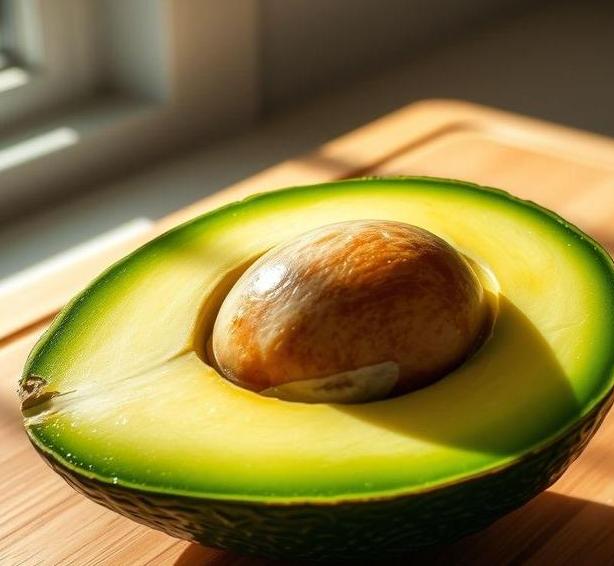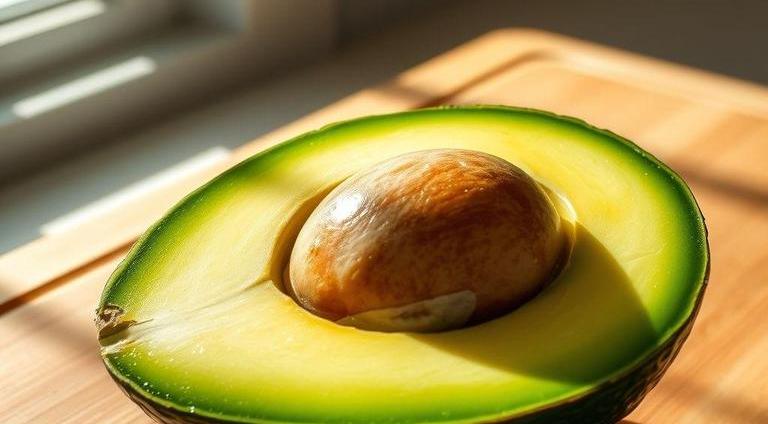Avocados are one of those fruits that have surged in popularity over the last couple of decades, thanks to their creamy texture, mild flavor, and nutritional benefits. Whether you’re adding them to salads, smearing them on toast, or blending them into smoothies, avocados have found their way into countless recipes. But there’s one lingering question that often pops up when we buy them: Can avocado go bad?
In short, yes-avocados, like most fruits, have a shelf life, and they can spoil if not stored properly. However, understanding how to identify when your avocado has gone bad and knowing how to store it can save you money and waste. So, let’s dive deep into everything you need to know to ensure you always enjoy your avocados at their peak freshness.
Can Avocado Go Bad?
Yes, avocados can indeed go bad. While they are known for their long ripening process, they are also relatively fragile once ripe. Several factors affect their longevity-such as how ripe they are when you purchase them, how they’re stored, and how long they’ve been sitting out.
- Unripe Avocados: If you buy an avocado that’s still hard, it will continue to ripen over a few days at room temperature. It’s when they’ve ripened that they can go bad quickly if not used or stored correctly.
- Ripe Avocados: Once they’re soft and ready to eat, you’ve got to act fast. They can spoil rapidly once they’re ripe.
- Cut Avocados: If you’ve cut into an avocado, its shelf life drops drastically. The flesh is exposed to air, which accelerates oxidation and spoilage.
The key to avoiding spoilage is monitoring the ripeness and understanding the right storage methods.
Shelf Life For Avocado

When we talk about the shelf life of an avocado, it’s crucial to distinguish between different stages:
-
Whole Unripe Avocado
- Shelf Life: 3-7 days
- Unripe avocados can last quite a while, depending on how firm they are when you buy them. Keep them at room temperature, and they’ll soften up in about 3-7 days. You can speed up the process by placing them in a paper bag with an apple or banana, as these fruits emit ethylene gas, which accelerates ripening.
-
Whole Ripe Avocado
- Shelf Life: 1-2 days at room temperature or up to 1 week in the fridge
- Once your avocado reaches peak ripeness, it’s best to eat it right away. If you’re not ready to use it, you can extend its life by refrigerating it. This slows down the oxidation process but doesn’t stop it completely.
-
Cut Avocado
- Shelf Life: 1-2 days in the fridge
- Once an avocado is cut, its shelf life drops dramatically. The flesh is exposed to air, leading to browning and spoilage. However, storing it in an airtight container or wrapping it tightly with plastic wrap can give you an extra day or two.
-
Mashed Or Guacamole
- Shelf Life: 1-2 days in the fridge
- Guacamole or mashed avocado can be stored for a short period in the fridge, especially if you add an acid (like lemon or lime juice) to prevent oxidation. However, it’s best consumed within a day or two for the best flavor and texture.
Common Signs Of Spoilage
Even though you may store your avocados correctly, they’ll eventually show signs of spoilage. Here are a few things to look out for:
-
Brown Or Black Spots
- A ripe avocado can start to develop brown or black spots on the flesh, which are signs of oxidation. While they’re not dangerous, they’re a clear indicator that the fruit is past its prime. The more extensive the browning, the less appetizing the avocado becomes.
-
Off Smell
- If an avocado has gone bad, it will develop a rancid or sour smell. It won’t just have a slightly dull scent-if it smells unpleasant, it’s time to toss it.
-
Mushy Or Stringy Texture
- When you slice open an avocado and find it to be overly mushy or stringy, it’s likely gone bad. Avocados should have a creamy and smooth texture. A slimy texture or visible discoloration usually indicates spoilage.
-
Wrinkled Skin
- Wrinkles on the skin of an avocado can be a sign that the fruit has over-ripened. While not necessarily harmful, an avocado with wrinkled skin is usually past its peak.
-
Visible Mold
- This is an obvious red flag. If you see mold on the flesh or the skin of the avocado, discard it immediately. Mold growth indicates the presence of bacteria, which could be harmful.
How To Store Avocado?

Proper storage is key to extending the shelf life of avocados. Here are some tips for both whole and cut avocados:
For Whole Avocados (Unripe)
-
Room Temperature
- Keep unripe avocados on the countertop at room temperature until they soften. Avoid putting them in direct sunlight, as that can cause uneven ripening.
-
Accelerating Ripening
- If you need to speed up the ripening process, place the avocado in a brown paper bag with an apple or banana. These fruits release ethylene gas, which accelerates ripening.
For Whole Avocados (Ripe)
-
Refrigeration
- Once the avocado is ripe, store it in the fridge to slow down the ripening process. While it may not stay as fresh as when it was just ripe, it will last an extra few days in the fridge.
For Cut Avocados
-
Wrap And Seal
- To prevent browning, wrap the cut avocado tightly in plastic wrap or store it in an airtight container. It helps reduce exposure to air, which slows oxidation.
-
Lemon Or Lime Juice
- Squeeze a bit of lemon or lime juice on the exposed flesh to help preserve its color and freshness. The citric acid helps slow down the oxidation process.
-
Use Onion
- Some people swear by placing a sliced onion in the container with the avocado. The gases from the onion can prevent browning and keep the avocado fresh a little longer.
-
Pit Preservation
- Keeping the pit in the cut avocado can help preserve its freshness. The pit slows down oxidation in the part of the avocado it touches.
For Mashed Or Guacamole
-
Airtight Container
- Store mashed or guacamole in an airtight container. If you want to go the extra mile, cover the surface of the guacamole with a thin layer of water to prevent air from reaching it.
-
Freezing
- While not ideal for texture, mashed avocado can be frozen for longer storage. Make sure to place it in an airtight container or a freezer-safe bag, and use within 3-6 months.
Expert Tips
-
Avoid Storing Whole Avocados In The Fridge Before They Ripen
- It can slow down the ripening process, but it may also lead to uneven ripening or an incomplete ripening cycle. Only refrigerate ripe avocados.
-
Know When To Eat
- If you’re buying avocados in bulk, try to pick a mix of ripe and unripe ones. This way, you can enjoy avocados at their peak without feeling rushed to eat them all at once.
-
Freeze For Smoothies
- If you’re worried about your avocados ripening before you can eat them, freeze them! Simply scoop out the flesh, wrap it tightly, and store in a freezer-safe bag. Thaw before blending into a smoothie.
-
Use The "Finger Test" For Ripeness
- When checking if an avocado is ripe, gently press near the top (the stem end). If it yields slightly but doesn’t feel mushy, it’s ready to eat. If it feels hard, it’s unripe. If it feels squishy or mushy, it’s overripe.
FAQs
Can An Avocado Go Bad Even When It’s Stored In The Fridge?
Yes, avocados can still go bad in the fridge. Although refrigeration slows down the ripening process, avocados can still spoil due to overripeness, mold growth, or improper storage.
How Can You Tell If An Avocado Has Gone Bad?
Signs that an avocado has gone bad include browning or blackening of the flesh, an off or rancid smell, and the presence of mold or a mushy texture. A bad avocado will also feel overly soft when gently squeezed.
Can You Eat An Avocado If It’s Brown Inside?
While brown spots in the flesh of an avocado are usually safe to eat, they can indicate overripeness. If the entire avocado is brown and mushy, it is best to discard it as it may taste bitter and be spoiled.
What Is The Best Way To Store An Avocado To Prevent It From Going Bad?
To prevent an avocado from going bad, store it in a cool, dry place if it is unripe. Once ripe, place it in the fridge. For cut avocados, squeeze lemon or lime juice on the exposed flesh and wrap them tightly in plastic wrap to prevent oxidation.
How Long Can Avocados Last In The Fridge?
A ripe avocado can last for about 2 to 3 days in the fridge. If it’s cut, it can stay fresh for 1 to 2 days, especially if it is properly wrapped and treated with lemon or lime juice to slow browning.
Can You Freeze An Avocado To Extend Its Shelf Life?
Yes, you can freeze avocados. To do so, mash the avocado or slice it, then store it in an airtight container or freezer bag. Freezing preserves the avocado for up to 3 months, although the texture may change upon thawing.
Is It Safe To Eat An Avocado With Black Spots?
Black spots in an avocado often indicate overripe areas, which may not be pleasant to eat but are usually safe. However, if the black spots are accompanied by mold or a foul smell, it’s best to discard the fruit.
How Can I Prevent My Avocado From Turning Brown After Cutting It?
To prevent browning, sprinkle lemon or lime juice on the cut surface of the avocado. You can also store it in an airtight container with the pit still inside, as the pit helps slow down oxidation.
What Causes An Avocado To Go Bad?
Avocados go bad primarily due to overripeness, exposure to air (which leads to browning), bacterial or fungal contamination, and improper storage. If left at room temperature for too long, avocados can ripen too quickly and spoil.
Can I Use An Avocado That Has Darkened But Still Feels Firm?
If the avocado has darkened but still feels firm, it might not be fully ripe yet. It’s safe to eat, but you may want to wait until it softens slightly for better flavor and texture.